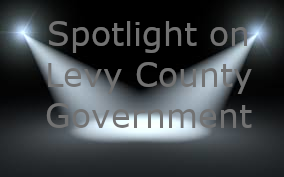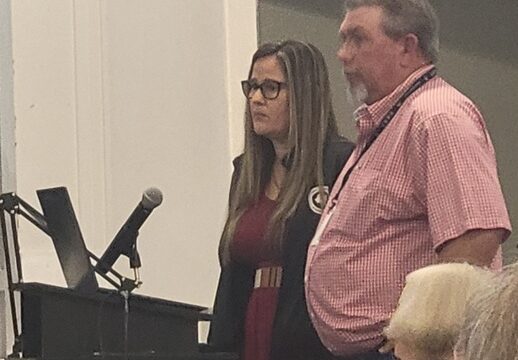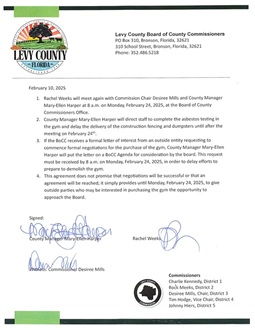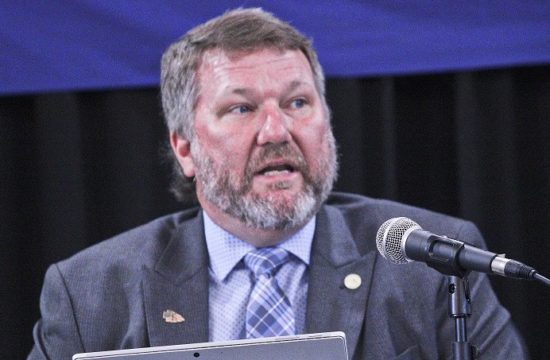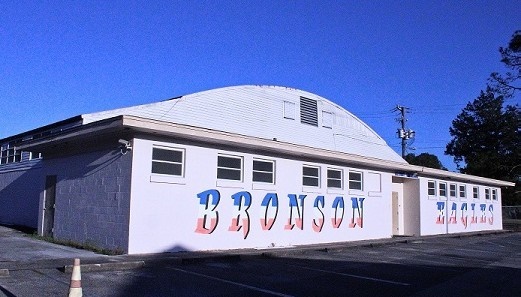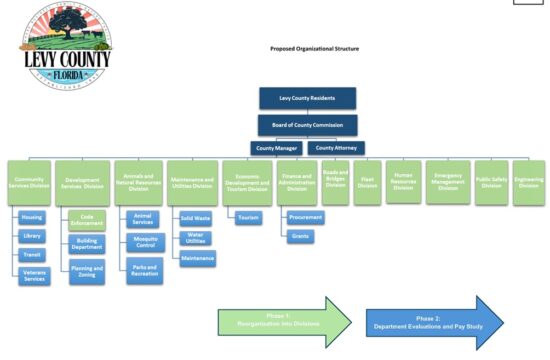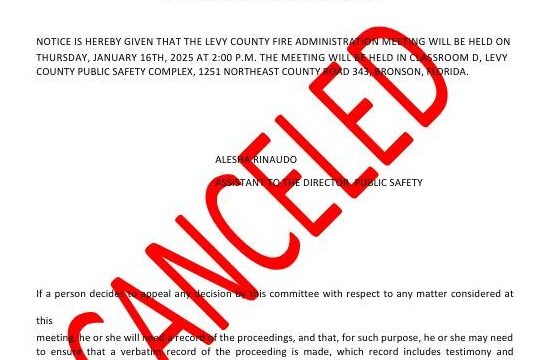By Terry Witt-Spotlight Senior Reporter
A capacity crowd of Levy County residents vented their rage Tuesday during a Levy County Commission meeting by shouting at Florida Department of Transportation officials discussing a proposed toll road through the county.
Residents were frustrated that routes proposed for the Northern Turnpike Extension could potentially destroy their homes, nearby forests and, wildlife habitat and ruin their peaceful neighborhoods.
Commission Chairman John Meeks several times was forced to slam his gavel and warn residents to restrain themselves. He said they were getting too loud and he wouldn’t tolerate it.
Commissioners responded to the overwhelming opposition to the road by adopting a resolution introduced by Commissioner Lilly Rooks that supports the “no-build” alternative, which in plain language means the county commission opposes construction of the toll road through Levy County.
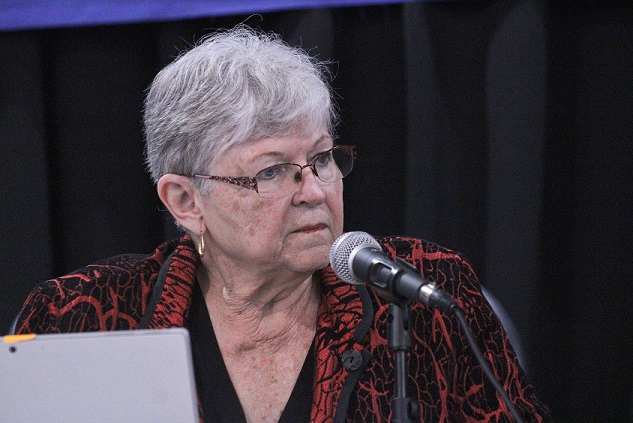
The resolution goes to Gov. Ron DeSantis, the Florida Senate president, House of Representatives Speaker, and the secretary of the Florida Department of Transportation asking them to support the “no-build” alternative for any Northern Turnpike Extension corridor that may be proposed through Levy County.
Many of those attending the meeting were from the Steeplechase subdivision in Morriston, as well as other Morriston residents, many of whom bought land in the area of Goethe State Forest and now fear the toll road could plow through their neighborhoods and ruin their lives.
There were surprises at the meeting, particularly when Ryan Asmus, a highway project design engineer for FDOT showed up unexpectedly and announced that the agency would soon begin a study of U.S. 19 next year to look at improvements to that highway. The study appears to be separate from the Northern Turnpike Extension study.
When questioned about the study, Asmus said the study would look at preserving the flow of traffic on U.S. 19 through the construction of bypasses or frontage roads or by other means, but he stopped short of saying the study of U.S. 19 could be a prelude to using the highway as a toll road or co-locating a toll road along the highway. He said the study won’t start until early next year. Asmus made no mention of the toll road connecting to U.S. 19.
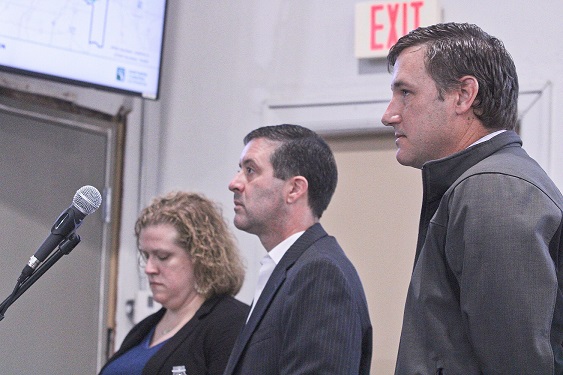
Commissioner Matt Brooks said after the meeting his analysis of the situation is that he sees no reason for the FDOT to launch an independent study of U.S. 19 and then explore building a toll road through the center of Levy County at the same time. He believes the state may eventually dump all the proposed corridors except for the one that would connect the Suncoast Parkway in Citrus County to U.S. 19 in Levy County. But he said it’s still speculation on his part and he has no way of knowing with certainty what will happen. He just knows he was surprised by the appearance of Asmus at the county commission meeting and by his surprise announcement that a study would begin early next year on making improvements to U.S. 19.
The idea of building a toll road alongside U.S 19 was explored last year through the state M-CORES study that looked at options for building a toll road from the Florida Turnpike terminus at Wildwood northward through Levy County to perhaps I-10. The M-CORES study was completed and then defunded by the Florida Legislature.
Many Levy County residents breathed a sigh of relief when they thought the possibility of a toll road being constructed through Levy County was dead. The Florida Legislature quickly made an about-face in the spring session when it passed Senate Bill 100 that funded a study of the Northern Turnpike Extension. FDOT notified the Levy County Commission on the afternoon of Nov. 14, 2021, that a new Northern Turnpike Extension study was beginning. Commissioners weren’t happy about being ambushed by the state with the surprise announcement. FDOT officials attended Tuesday’s board meeting to discuss the new study.
The new Northern Turnpike Extension study has identified four possible corridors for a four-lane toll road and identified them with colored lines on a map. The red line appeared to draw the wrath of the county commission since it appears to cut through the Morriston area and would potentially ravage farmlands, subdivisions, and forests. The red route continues past Bronson and up to U.S. 19 in Chiefland. The blue line, which cuts across south Levy County to U.S. 19 didn’t get any love either from the board for a lot of the same reasons.
After the meeting, Commissioner Matt Brooks of Williston said he thought FDOT could make a lot of people happy by wiping out the red line route.
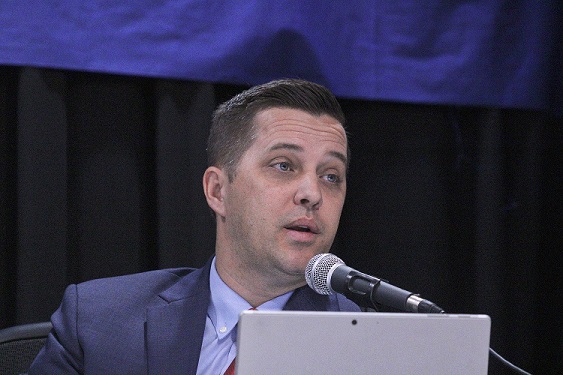
“I think if they wiped out that red line off the map after the first of the year, Steeplechase – you will hear them scream from your house to my house they’ll be so happy,” Brooks said.
Brooks said the Steeplechase residents and residents in other areas near Steeplechase and beyond were extremely well organized and ready to fight the toll road passing near or through their subdivision.
He said the former M-CORES study and the task forces that he and Commissioner Rock Meeks served on in 2020 emphasized the need to avoid residential subdivisions, farmlands, and environmentally sensitive areas in Levy County. On Tuesday, Brooks reminded FDOT officials of the recommendations from the M-CORES study and encouraged them to consider using those recommendations in the new study.
Commissioner Lilly Rooks figuratively punched FDOT officials in the mouth, with help from toll road opponents in the audience, when she noted the intense opposition to the toll road at the meeting.
“You can see how today that the people don’t want it,” Rooks said.
The crowd erupted in loud support of her statement.

“What kind of impact will it have on your decision?” Rooks said.
“It absolutely has an impact,” said William Burke, Northern Turnpike Extension manager.
Rooks asked if FDOT would then recommend the no-build option.
“Well, it will certainly be a consideration, I’ll tell you that,” Burke said, drawing an angry reaction from the crowd.
Burke said he couldn’t tell Rooks the outcome of this study at this point.
Rooks reminded him that the subject of a toll road through Levy County was first discussed in 1976 and it came up again in 1988, 1993, 1999, 2020, and now 2021.
“We’ve stood against this all this time. I don’t know why somebody up there thinks it would be different,” she said. “We know what goes on in the county, we know how they feel because we’re in touch with this day in and day out. I don’t know who’s over you but I wish you would take it back to them.”
Burke said the lines on the map are based on 1,000-feet wide corridors that are far wider than would be required for the toll road. The extra-wide study corridors gave the state some wiggle room. He said the toll road corridors would be closer to 350-feet across.
But Rooks said she was offended because he hadn’t returned any of her calls.
“You didn’t return any of my phone calls. When I call you, I expect a return phone call,” Rooks said, leaning toward the microphone and looking hard at Burke to drive the point home.
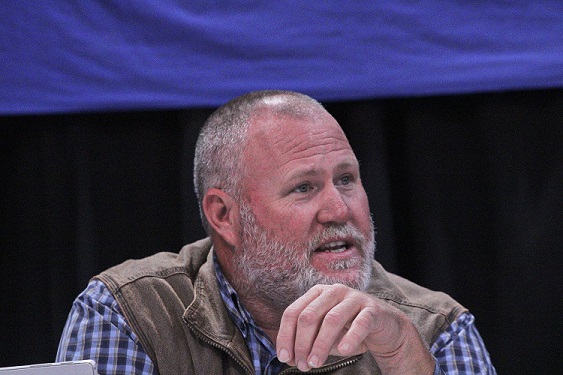
Commissioner Rock Meeks said there appears to be a communications disconnect between the county commission and FDOT, noting the county commission wasn’t notified of the study until the afternoon of Nov. 14, a Friday afternoon.
“That was not appreciated,” he said. “I believe there is a disconnect at that level and I don’t like it. “These people deserve answers and they’re looking at us for them. That’s distasteful that the representatives of Levy County, that DOT didn’t take the time to at least let us know. No one came out to at least give us some talking point or to have someone here to explain,” Meeks said.
Meeks suggested that a better way of routing the toll road was a straight line, apparently referring to the purple route line on the map that runs straight from Wildwood across Citrus County to the Suncoast Parkway. The state would apparently then connect the parkway to U.S. 19.
Brooks told FDOT officials that the Levy County Commission should be considered a partner in the study.
“We’re partners in this effort from the standpoint of communication and we can hear from residents and give feedback and be a little more in the know,” Brooks said, adding a few minutes later, “I think a lot of people are here for that red line that was drawn on the map A; a lot of people are saying stop, don’t do that.”
Commissioner John Meeks agreed that the red line wouldn’t work and he said the blue line divides the county in half.
“It’s the county that generations of my people have lived in, they farmed, they worked in the logging woods. This is our home. We chose to live here,” Meeks said.
He said he remembers standing on the front seat of his Dad’s truck holding his father’s shoulder as they drove down the road. He would ask his Dad to tell him about the people they would meet in the trucks. His dad knew them or knew where they lived and how they made a living.
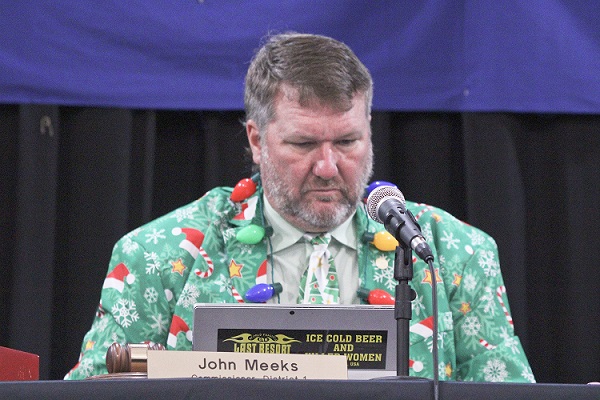
“We knew everybody 40 years ago, but the northernmost route is going to destroy the county I love,” Meeks said, drawing applause.
Williston attorney Brandon Peters thanked FDOT for allowing residents to comment on its website but stunned the crowd when he revealed that comment cards residents filled out at recent toll road meetings could be used against them by FDOT attorneys during eminent domain trials. Eminent domain is the process involving government condemnation of property and taking ownership for a negotiated price.
“You also gave us comment cards at these kickoff meetings. Hundreds and hundreds of people filled them out. My question to you is, does your agency warn people that FDOT lawyers take those cards and use them against folks when they try to take their homes in eminent domain cases?” Peters said.
The crowd groaned.
Peters also questioned whether FDOT factors in the millions of gallons of additional runoff from the new roads it constructs when attempting to project the impacts of road construction from stormwater runoff.
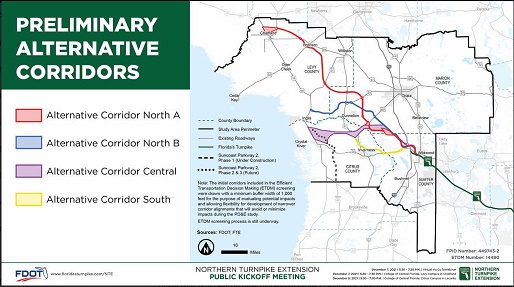
———————
Board of County Commission Regular Meeting December 21, 2021; Posted December 21, 2021
